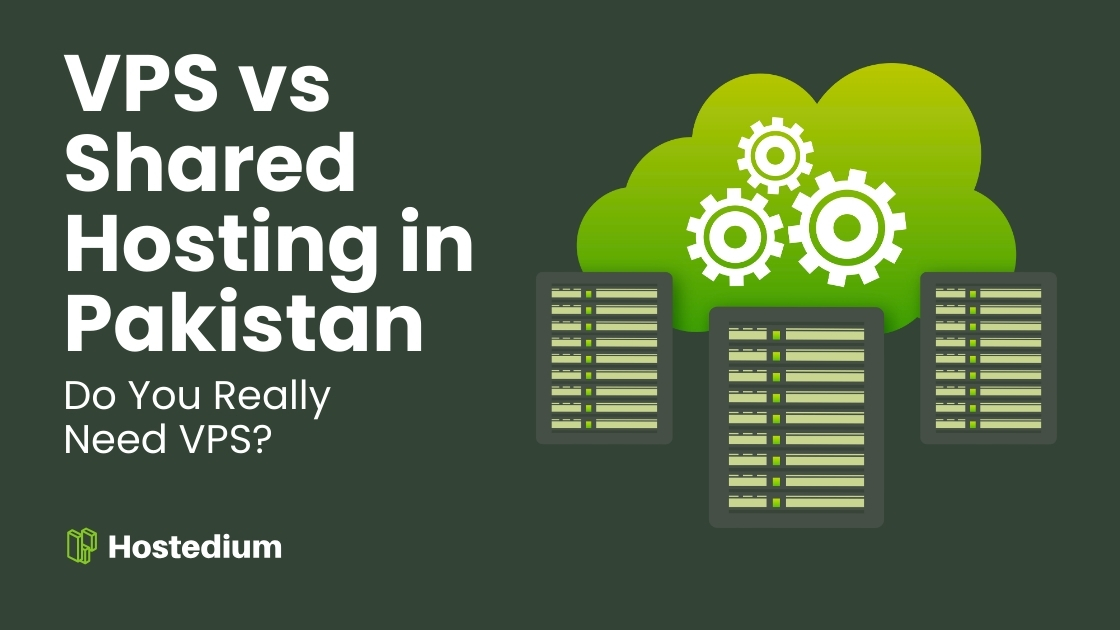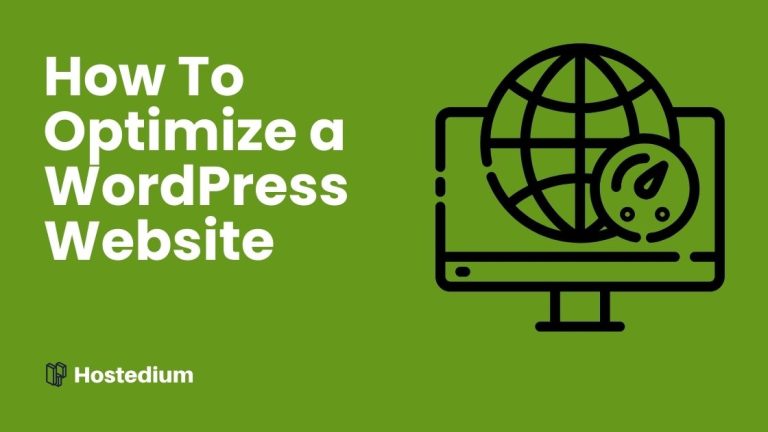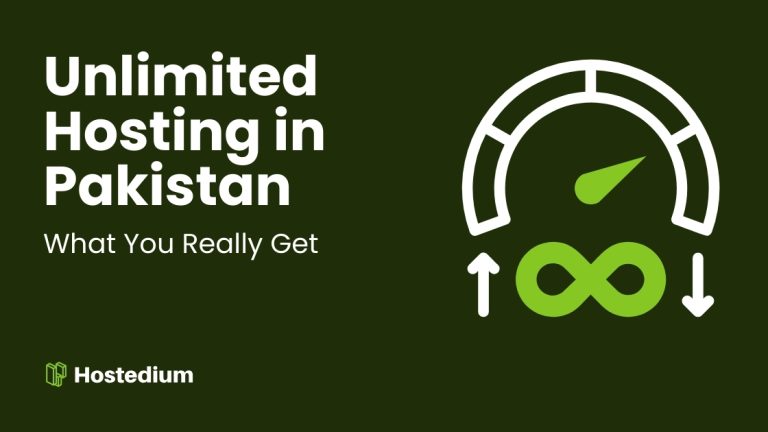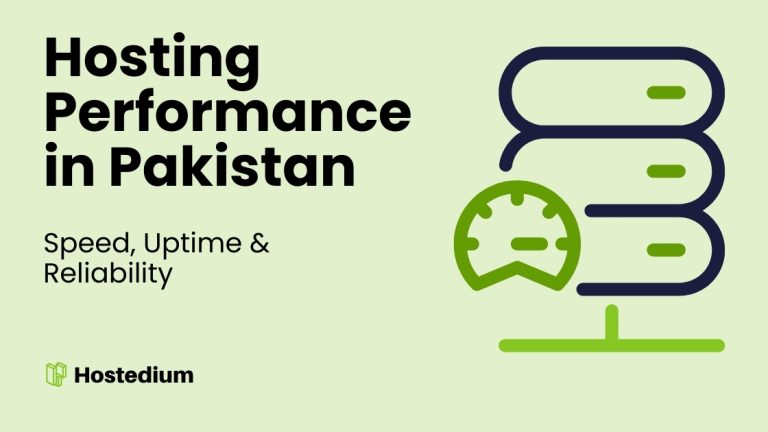If you’ve been exploring hosting options in Pakistan, you’ve probably seen both shared hosting and VPS hosting (Virtual Private Server) mentioned everywhere.
On paper, VPS sounds more powerful — more resources, more control, more “pro.” But here’s the real question:
👉 Do you actually need VPS hosting in Pakistan, or is shared hosting enough?
For most websites, the honest answer is: shared hosting is more than enough. VPS only makes sense for very specific, high-demand scenarios. Let’s break it down.
What is Shared Hosting?
Answer: Shared hosting means multiple websites run on the same server and share its resources (like CPU, RAM, and bandwidth).
Think of it like a student hostel. Rent is cheap, Wi-Fi is included, but if one guy streams cricket highlights all night, everyone’s internet slows down.
In Pakistan, shared hosting starts from PKR 599/month at Hostedium Hosting.
What is VPS Hosting?
Answer: VPS (Virtual Private Server) hosting divides a physical server into multiple “virtual” servers. Each website gets its own dedicated share of resources.
Think of VPS as renting your own apartment. You don’t share your kitchen or bathroom with neighbors, but the rent is higher.
In Pakistan, VPS hosting generally costs between PKR 2,000–5,000/month, depending on the provider.
Shared Hosting vs VPS Hosting: The Key Differences
| Feature | Shared Hosting (PKR 599/month – PKR 850/month) | VPS Hosting (PKR 2,000–5,000) |
|---|---|---|
| Resources | Shared with other sites | Dedicated slice per user |
| Ease of Use | Beginner-friendly (cPanel) | Requires technical skill |
| Scalability | Limited | Higher |
| Support | Usually fully managed | May require self-management |
| Best For | Students, SMEs, blogs | High-traffic stores, devs |
💡 Key Insight: A reliable shared hosting plan in Pakistan comfortably handles 10,000–30,000 monthly visits. That’s more than enough for 90% of sites.
Do You Really Need VPS in Pakistan?
Here’s the blunt truth: 80–90% of websites in Pakistan do not need VPS hosting.
👉 Shared hosting is enough if:
- You’re a student, blogger, or small business.
- Your site gets under ~30,000 monthly visits.
- You just need WordPress, a business site, or a portfolio.
👉 You may need VPS if:
- You run a large eCommerce site with heavy traffic.
- You’re a developer who needs custom server configurations.
- You run apps, SaaS products, or high-resource projects.
📌 Takeaway: Unless your site is pulling PSL-level traffic or running custom apps, shared hosting saves you money without hurting performance.
Why Many Pakistanis Overspend on VPS
- Marketing Hype: Hosting companies love pushing VPS because margins are higher.
- Fear Factor: Many assume “cheap = bad,” which isn’t true.
- Over-Estimating Needs: A blog with 1,000 monthly visitors doesn’t need VPS.
💡 Pro Tip: Start with shared hosting. If your site truly outgrows it, upgrading is always possible.
Case Examples
Example 1: Blogger in Lahore
- Traffic: ~8,000 visits/month
- Needs: WordPress, low budget
- Best Fit: Shared Hosting (PKR 599/month)
👉 VPS would be like renting a mansion just to host a diary.
Example 2: Online Store in Karachi
- Traffic: ~60,000 visits/month
- Needs: Payment integrations, stability, speed
- Best Fit: VPS — but only after shared hosting shows resource limits.
Example 3: Software Startup in Islamabad
- Building a SaaS tool with custom code.
- Needs: Root access, advanced database setups.
- Best Fit: VPS (or eventually cloud hosting).
Hosting Performance in Pakistan: Beyond the Buzzwords
A big misconception is that VPS is automatically “better.” In reality, performance often depends on the quality of the provider, not just the hosting type.
- Uptime: Reliable shared hosts like Hostedium offer 99.5%+. A cheap VPS host may not guarantee better uptime.
- Speed: Optimized shared hosting (SSD, LiteSpeed) can load faster than a poorly managed VPS.
- Support: Shared hosting is usually fully managed. VPS may leave you handling server issues yourself.
📊 According to the Uptime Institute Report, downtime can cost businesses far more than the hosting fee itself.
Cost Comparison in Pakistan
Here’s how the numbers usually look:
| Hosting Type | Avg. Price Range (PKR) | Best Fit |
|---|---|---|
| Shared Hosting | PKR 599/month – PKR 850/month | Students, SMEs, blogs |
| VPS Hosting | PKR 2,000 – 5,000 | Large eCommerce, SaaS, developers |
💡 Insight: If your website isn’t generating at least tens of thousands of rupees per month, it rarely makes sense to pay VPS prices.
Checklist: Should You Stick With Shared Hosting?
Ask yourself:
- Is my monthly traffic under 30k? ✅
- Do I just need WordPress, a blog, or a business site? ✅
- Is my budget under PKR 1,000/month? ✅
If yes → Shared hosting is the smarter choice.
Extended FAQs
Q1. Is VPS faster than shared hosting?
Yes, but only if your website actually needs the extra resources. Otherwise, a good shared host performs just as well.
Q2. Can I start with shared and upgrade later?
Yes. Providers like Hostedium allow seamless upgrades.
Q3. Is VPS more secure?
Slightly, but shared hosting with an SSL certificate (from PKR 3750/year) and regular updates is secure enough for most sites.
Q4. Do Pakistani businesses really need VPS?
Only larger eCommerce stores, SaaS startups, or media sites with heavy traffic.
Q5. What’s cheaper long-term?
Shared hosting. VPS is only worthwhile if your website revenue justifies the cost.
Q6. Does VPS come with cPanel?
Not always. Sometimes it costs extra, and you may need to manage servers yourself.
Q7. Is shared hosting bad for SEO?
No. Site speed and uptime matter more than “shared vs VPS.”
Q8. Can shared hosting handle eCommerce?
Yes — small stores with SSL certificates run well on shared hosting.
Q9. Can I host multiple sites on shared hosting?
Yes, with Business Hosting or Unlimited Hosting.
Q10. Do I need to buy a domain separately?
Yes. Domains start from PKR 4750/year for .com, PKR 4750/year for .net, and PKR 4350/year for .org.
Final Recommendation
“For 90% of websites in Pakistan, shared hosting is more than enough. VPS hosting is powerful, but unnecessary unless you’re running high-traffic eCommerce or advanced apps. Start simple, save money, and upgrade only when your site truly needs it.”




